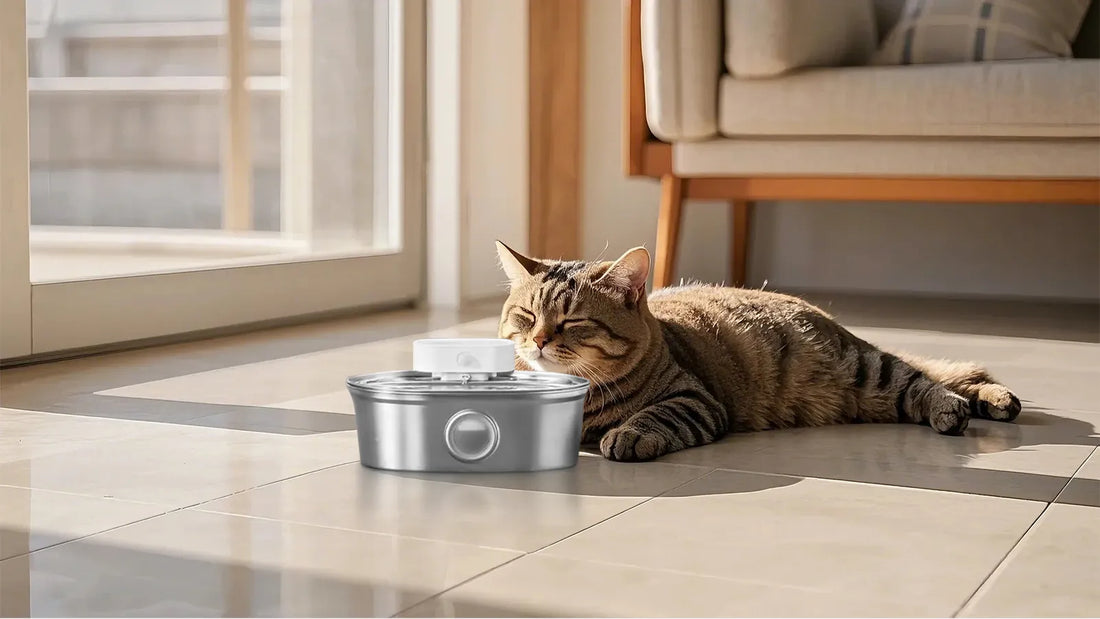If you've noticed that your dog won't drink out of the water bowl, it can be a cause for concern. Hydration is essential for your pet's health, and understanding the reasons behind this behavior is the first step toward addressing it. This article delves into the possible causes and offers actionable solutions to help your furry friend stay hydrated.
Possible Reasons Why Your Dog Won't Drink from the Bowl
There are several reasons why your dog might avoid drinking from their water bowl. Identifying the root cause is crucial to finding the right solution.
1. The Water Bowl Itself
Sometimes, the issue lies with the bowl. Dogs can be picky about the material, size, or shape of their water bowl. For instance, some dogs dislike metal bowls because they can be noisy or reflect light in a way that bothers them. Plastic bowls, on the other hand, can retain odors or develop scratches that harbor bacteria.
2. Water Quality
Dogs have a keen sense of smell and taste, and they may refuse to drink water that smells or tastes off. Tap water with high chlorine levels or impurities can be unappealing to your pet. Additionally, stagnant water that hasn't been changed recently might deter them from drinking.
3. Location of the Bowl
The placement of the water bowl can also play a role. If the bowl is near their food, some dogs might avoid drinking because they associate the area with eating rather than drinking. Similarly, placing the bowl in a high-traffic area or near loud appliances might make your dog feel uncomfortable.
4. Health Issues
Underlying health problems could be the reason your dog isn't drinking from their bowl. Dental pain, throat issues, or gastrointestinal discomfort might make drinking difficult or painful. If you suspect a health issue, it's essential to consult your veterinarian.
5. Behavioral Factors
Behavioral reasons, such as stress or anxiety, can also lead to a refusal to drink. Changes in the household, new pets, or even a recent move can affect your dog's behavior and habits.
Solutions to Encourage Your Dog to Drink from the Bowl
Once you've identified the potential cause, you can take steps to encourage your dog to drink from their water bowl. Here are some practical solutions to try.
1. Experiment with Different Bowls
Try using bowls made from different materials, such as ceramic or stainless steel, to see if your dog prefers one over the other. Ensure the bowl is the right size and shape for your dog's breed and size. Some dogs prefer shallow bowls, while others might like deeper ones.
2. Ensure Clean, Fresh Water
Change the water in your dog's bowl regularly to keep it fresh and appealing. If your tap water has a strong odor or taste, consider using filtered or bottled water. Cleaning the bowl daily can also prevent the buildup of bacteria or residue.
3. Adjust the Bowl's Location
Move the water bowl to a quiet, accessible area where your dog feels comfortable. Avoid placing it near their food or in noisy areas. Some dogs prefer having multiple water bowls in different locations around the house.
4. Monitor Your Dog's Health
If you suspect a health issue, schedule a visit to the veterinarian. Addressing any underlying medical conditions can help resolve the problem. Your vet might also recommend specific hydration strategies based on your dog's needs.
5. Address Behavioral Concerns
If stress or anxiety is the cause, try to identify and address the source of your dog's discomfort. Providing a calm, stable environment can help them feel more at ease. In some cases, consulting a professional dog behaviorist might be necessary.
Alternative Hydration Methods
If your dog continues to refuse their water bowl, consider alternative methods to ensure they stay hydrated.
1. Use a Pet Fountain
Many dogs are attracted to moving water. A pet fountain can provide a continuous flow of fresh water, which might encourage your dog to drink more.
2. Add Flavor to the Water
Adding a small amount of low-sodium broth or a splash of water from canned dog food can make the water more appealing. Be sure to use only dog-safe ingredients and avoid anything with added salt or spices.
3. Offer Wet Food
Wet dog food contains a high moisture content and can contribute to your dog's hydration. If your dog isn't drinking enough water, incorporating wet food into their diet can help.
4. Provide Ice Cubes
Some dogs enjoy chewing on ice cubes, which can be a fun way to keep them hydrated. You can also freeze low-sodium broth into ice cubes for added flavor.
When to Seek Professional Help
If your dog's refusal to drink persists despite your efforts, it's important to seek professional help. Dehydration can lead to serious health issues, and a veterinarian can provide guidance tailored to your dog's specific needs. Additionally, sudden changes in drinking habits could indicate an underlying medical condition that requires prompt attention.
By understanding the reasons behind your dog's behavior and trying different solutions, you can help ensure they stay hydrated and healthy. Remember, every dog is unique, and what works for one might not work for another. Patience and persistence are key to finding the right approach for your furry friend.













